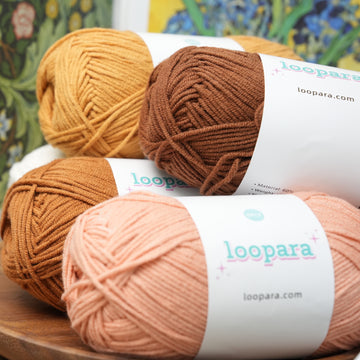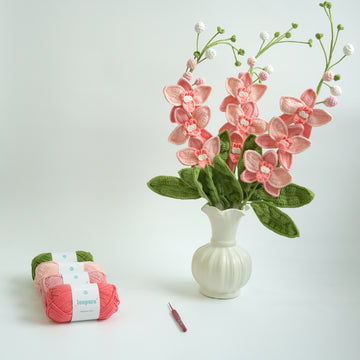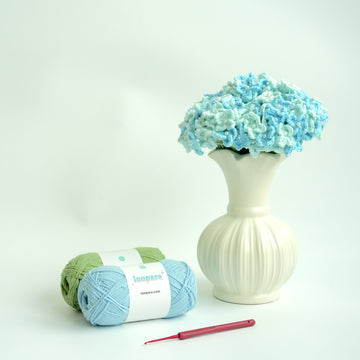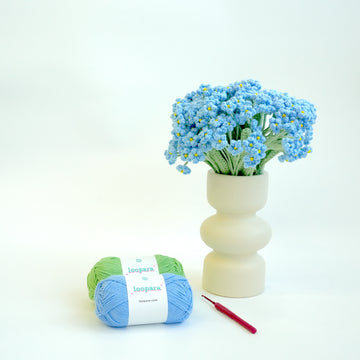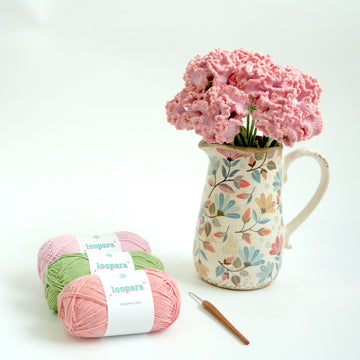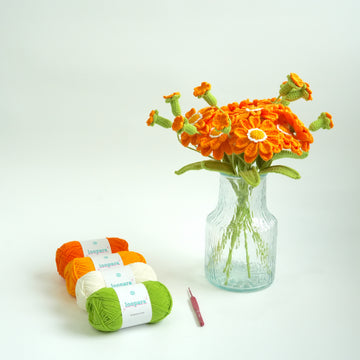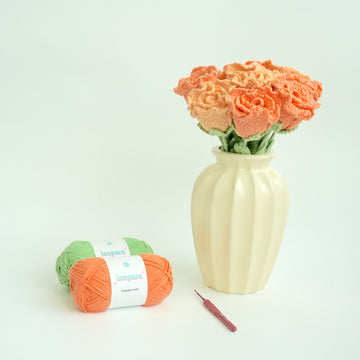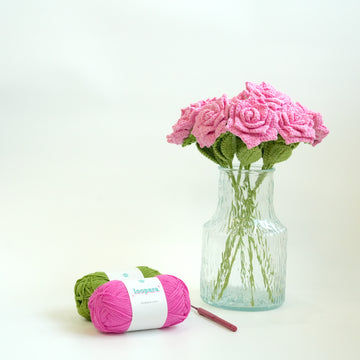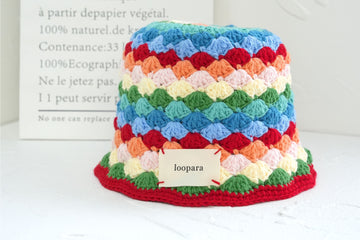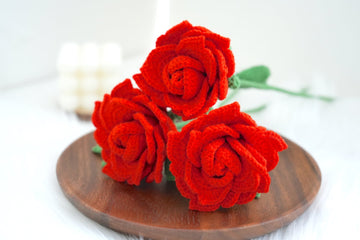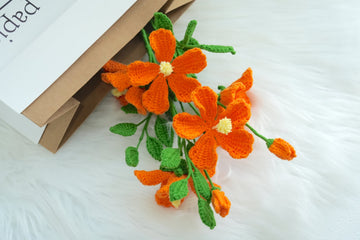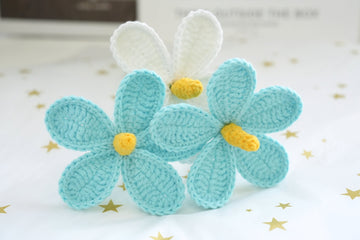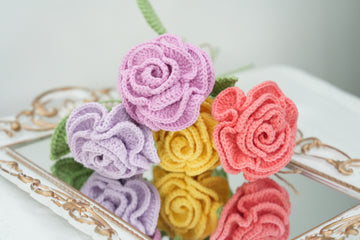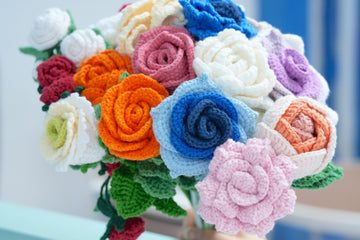One of the easiest crochet projects for your home is a crochet dishcloth. And acrylic is one of the most popular crochet yarns. So can you put the two together? Can you use acrylic yarn for dishcloths?
We take a look at the pros and cons. And we offer some alternative yarn types you might want to consider.
Form follows function
Deciding on the right yarn for any crochet project means considering how the finished item will be used. When it comes to a dishcloth, you’d ideally like it to:
- be tough enough so that it doesn’t disintegrate when used
- be abrasive enough to handle ground-in dirt
- be able to absorb water
- have a slight static charge, to help with picking up debris
- not leach any unpleasant chemicals into your kitchen
- be quick drying
- be washable.
To cut to the chase, acrylic scores well on static charge and drying time. For everything else, there are better options – cotton or hemp, for example.
Let’s take a more detailed look at how acrylic yarn measures up against these criteria.
Durability
Acrylic is a reasonably hard-wearing yarn. But it’s not as tough as cotton, linen or hemp.
If you scrub away with an acrylic dishcloth, you’ll probably find it gets misshapen or stretches. That’s hardly the end of the world – after all, a dishcloth isn’t known for its looks!
But over time, you may find the threads get fuzzier. And that can make it harder to rinse away dirt and kitchen debris.
Abrasiveness
With many crochet projects, you’ll want a yarn that’s smooth and soft to the touch. But that’s not the case with dishcloths. Here, you need a fiber that’s abrasive enough to rub away stubborn dirt and stains.
Acrylic isn’t particularly good for this. It’s designed to mimic wool, so it tends to be reasonably soft.
A yarn with firmer fibers will give more power to your scrubbing elbow. Again, cotton is a good choice. Hemp is even better.
Whatever yarn you choose, a textured pattern will help your dishcloth create more friction when you scrub.
Absorption
Whether you’re mopping up a spill or cleaning dishes, dishcloths need to be able to absorb water. And acrylic doesn’t do that particularly well.
When you think of how acrylic fiber is made, it’s not hard to understand why that is. Acrylic comes from petroleum – it’s essentially plastic spun into a yarn. That means the fibers are very smooth. So water molecules just slide off them.
Wool is water-resistant too, but for a different reason. It’s coated in an oily substance called lanolin, which stops the water being absorbed. So we wouldn’t recommend making a dishcloth out of wool either!
A much better option is cotton. Linen is good too, although it isn’t quite as absorbent. And the winner in the absorbency stakes is hemp, which will absorb an impressive 30% more water than cotton.
Static charge
Acrylic is much more likely than natural fibers to have a static charge. That’s not great when it comes to clothing, which can cling, crackle, and even give you a mild electric shock. But for dishcloths it’s a real advantage.
The slight static charge can help to attract dirt to the cloth when you’re wiping over countertops. That makes it a great duster – much better than cotton, which can simply move the dust particles around.
Chemicals
Dishcloths are used in the kitchen, where you also prepare food and drinks. So you don’t really want your dishcloth introducing toxic chemicals into that environment.
As we know, acrylic is made from petroleum, which isn’t something you’d want near your food cupboard. But some acrylic yarns are labeled “hypoallergenic”. So are they safe to use as for a dishcloth or not?
A hypoallergenic label means the fibers have been given a special coating. That’s designed to stop dust mites and other allergens settling on the fabric.
But the real problem with acrylic fiber isn’t dust mites but microplastics. These leach out of the dishcloth whenever it gets wet.
That’s a serious problem, because those microplastics will be washed down the drain and into the water system. There, they do huge harm to the oceans and ecosystem.
But they can cause more immediate problems too. If they get onto your food, you’ll ingest them. Microplastics are already everywhere, and they’ve been connected to a range of health harms.
Natural fibers don’t contain microplastics. So why increase the microplastics in your home with an acrylic dishcloth?
Drying time
Acrylic dishcloths usually dry quickly. But the reason for that is that they don’t absorb water well in the first place.
Acrylic molecules are hydrophobic, meaning they repel water. That means acrylic yarns can be hard to get clean, and can harbor bacteria.
But it’s also why acrylic fibers have a static charge, making them great dusters.
Using a natural fiber, like cotton or hemp, that absorbs water better will make your dishcloth more effective at cleaning. But a side-effect is that it will almost certainly take longer to dry.
You can reduce drying times by hanging your dishcloth up when you’ve finished using it, so that more of the surface is exposed to the air. Even draping it over the tap will help.
Washability
The general consensus is that acrylic yarns stand up well to washing.
It’s certainly the case that they can be put on a hotter cycle in the washing machine without shrinking the way cotton can. But that doesn’t necessarily mean everything in the laundry garden is rosy for acrylic.
While cotton can shrink in a wash that’s too hot, acrylic can stretch. And the fibers also tend to pill after washing (in other words, they form bobbles on the surface of the fabric). A bobbly dishcloth isn’t the end of the world, of course.
It’s also worth noting that acrylic doesn’t fare well in a dryer. The high temperatures can melt the fibers. But as we already know, acrylic dries fairly quickly, so keeping it out of the dryer shouldn’t be too much of a hardship.
Best yarn for washcloth
So if acrylic has some downsides when it comes to crocheting dishcloths, what other options might you consider?
Here are a few for your shortlist.
1. Cotton

Cotton yarns are widely available and make great dishcloths. They’re strong, good at absorbing water, and can be machine washed. Just make sure you don’t wash them too hot to avoid shrinking.
Use unbleached and undyed cotton to avoid any issues from the chemicals used in those processes. Alternatively, there are some good cotton yarns out there that are colored with organic dyes.
While cotton is a natural yarn, it’s not without issues in terms of its environmental impact. It requires large quantities of water to grow, as well as warm temperatures. That means it’s a drain on water resources in areas of scarcity, and it requires fossil fuels for transportation.
Non-organically produced cotton is also grown using pesticides. That’s another good reason to choose organic alternatives. The negative with organic cotton is that it’s generally more expensive.
2. Linen
Linen yarn shares many of the same properties as cotton. It’s tough and machine washable, as long as the temperature isn’t too high.
But because the fibers in linen are longer and more tightly wrapped than in cotton, it’s a firmer fabric. That means it can produce a more abrasive finish that’s better at tackling ground-in dirt.
It’s absorbent too, though not quite as absorbent as cotton. Cotton can soak up over 25% of its weight in water. The figure for linen is around 20%.
3. Hemp
For our money, hemp is the king of the castle when it comes to yarns for dishcloths.
It’s a natural fiber, so you don’t need to worry about microplastics. It’s incredibly robust, lasting for decades. It’s resistant to mildew, so it won’t get mouldy. It’s amazingly absorbent, able to soak up 30% more water than cotton. And it’s super-strong – three times as strong as cotton.
All this, and it’s much more sustainable than cotton too. It grows well without pesticides and needs far less water than cotton. Some farmers still use fertilisers, though, so look for organic options to minimise the environmental impact.
There are only a couple of downsides to using hemp yarn for dishcloths.
The first is availability. Hemp yarn isn’t yet as easy to get your hands on as cotton or acrylic.
The second is the flip-side of that firm texture that’s so good for cleaning away dirt. Hemp fibers are tough, and can be hard work to crochet with. On the other hand, you’re making a dishcloth not a blanket – so you won’t have to stick with it for too long.
Can you use acrylic yarn for dishcloths? A quickfire summary
You certainly can use acrylic yarn for dishcloths. And some people like it because of its static charge and quick drying time.
But there are far better options out there. Choosing a natural yarn will avoid your dishcloth adding microplastics to your kitchen. And if you can find it, hemp is a brilliant alternative – more absorbent, harder wearing, mildew-resistant and sustainable.


